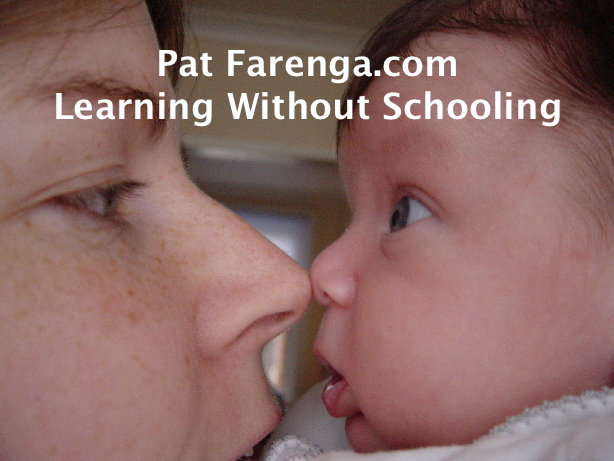Legendary Learning
 Friday, May 18, 2012 at 2:56PM
Friday, May 18, 2012 at 2:56PM One of the most popular books we sold through the John Holt Book and Music Store was by Nancy and Malcolm Plent, “An ‘A’ in Life: Famous Homeschoolers.” Nancy and Mac published various editions of this book during the 15 years or so that we sold it and I know many people found support and inspiration from knowing that people as diverse as Agatha Christie, George S. Patton, and Gloria Steinman were homeschooled. That book has been out of print for some time but Jamie McMilllin has created a successor:
Legendary Learning: The Famous Homeschoolers' Guide to Self-Directed Excellence.
Ms.McMillin does more than describe the biographies of famous people; she also describes the richness of homeschooling, including unschooling, so this book is also an overview of the homeschooling landscape by an eclectic homeschooler. No commitment to any one philosophy or idea about education is fully endorsed or described—openness to experimentation is the focus of McMillmin’s approach—but enough information is provided so if an approach is interesting to you, you will be able to easily get more information about it from the book’s well-done references.
Legendary Learning: The Famous Homeschoolers' Guide to Self-Directed Excellence is an interesting amalgam of biography and opinion. Rather than present each person’s educational biography and life accomplishments as separate entries, McMilllin uses their lives to connect how they learned things in their own ways to how homeschoolers today, and people in general, learn things. Here is an example:
Timing is everything. The famous homeschoolers I studied seemed to learn much more when they were ready and motivated for personal reasons. Naturalist John Muir had been drilled in arithmetic at a young age, but claimed he never really understood it until he taught himself as a teenager. After the age of twelve, Thomas Edison taught himself everything he needed to run his various businesses and experiments. When fifteen-year-old Teddy Roosevelt was preparing for the Harvard Entrance Exams, he was behind in required math skills but soon caught up with the help of his tutor.
There are many more current examples in homeschool books about kids who were able to learn four years worth of elementary mathematics in just a short period of time when they were older and motivated. My son Jesse . . . is one example. He absolutely hated math textbooks, but was happy to play all sorts of math games (including computer games). Finally at the age of twelve, he conceded that he didn’t recognize some of the math concepts his school friends were talking about so he wanted to catch up. He had also decided by then that he wanted to go to college and knew from family discussions that he would probably need to take an SAT test. So we selected a curriculum together and he buckled down—without any harassment on my part. He didn’t like math any better than before, but he learned quickly (and pulled down a respectable score on the SAT too!). Timing is everything.
I think this book is best for people considering homeschooling or who are just getting started with it, particularly the many bits of advice McMillin gives for living and learning with your children. But everyone will enjoy the many insightful quotes from famous people about learning that are peppered throughout the pages, such as these:
“Just as eating against one’s will is injurious to health, so studying without a liking for it spoils the memory, and it retains nothing it takes in.”—Leonardo Da Vinci
“The years teach much that the days never know.”—Ralph Waldo Emerson
“Creativity, not science, lies at the leading edge of the evolution of the human species; that is the delightful and beautiful paradox.”—Robin King
 Pat |
Pat |  Post a Comment |
Post a Comment | 

